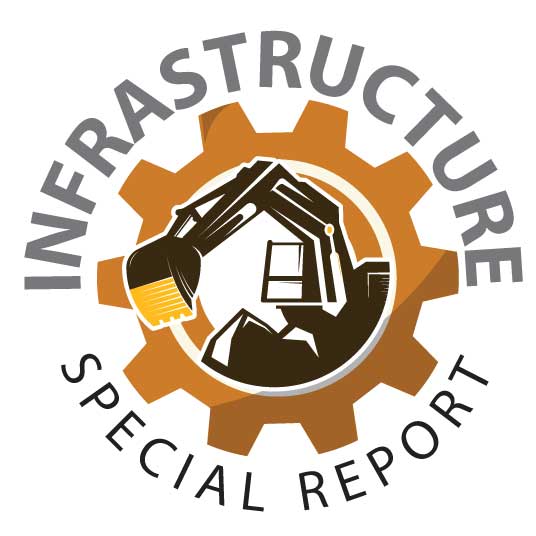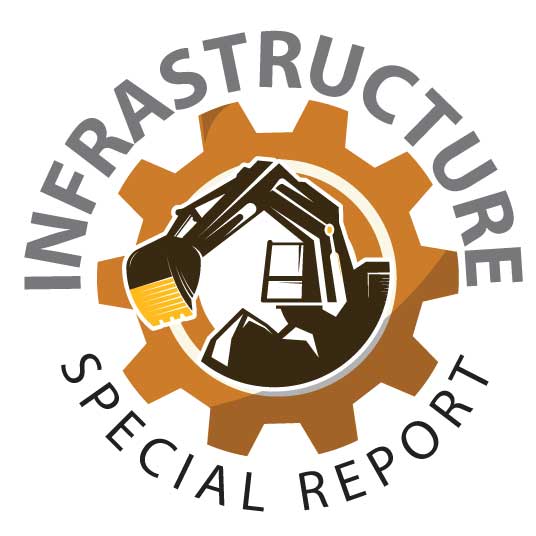By Beatrice M. Laforga, Reporter
FOR YET another year, the government has been forced to operate under a “double budget” arrangement, in which the unspent funds from the prior periods were authorized for use beyond the end of the calendar year they were intended for.
Which raises the question: Do these extensions of budget validity actually help supercharge spending, or are they a symptom of an inability to gain any traction for even the government’s centerpiece programs?
Infrastructure projects — the spending priority that the Duterte government has staked its very reputation on, and the one use of government funds that everyone in the leadership team agrees will boost the economy — have been criticized as either too little, too late, or too inefficiently disbursed, critiques that do not reflect well on how the economy has been managed nearly five years into the Presidential term, when there might be a reasonable expectation that the people who run the economy ought to have known by now about the pitfalls that hinder spending.
 The government’s big plan was always to keep Congress in line by dangling “Build, Build, Build” (BBB) and its wealth of constituent-pleasing infrastructure projects over the legislators’ heads. This neat arrangement was upended when the 2019 budget was delayed by nearly four months, causing BBB projects to miss the dry-season construction window, single-handedly leading to that year’s economic slowdown and forcing the government to allow funds from that spending plan to be disbursed for an additional year. Then the pandemic hit in 2020, disrupting construction projects even more, and forcing the enactment of legislation extending the deadline to spend funds from that budget until the end of 2021.
The government’s big plan was always to keep Congress in line by dangling “Build, Build, Build” (BBB) and its wealth of constituent-pleasing infrastructure projects over the legislators’ heads. This neat arrangement was upended when the 2019 budget was delayed by nearly four months, causing BBB projects to miss the dry-season construction window, single-handedly leading to that year’s economic slowdown and forcing the government to allow funds from that spending plan to be disbursed for an additional year. Then the pandemic hit in 2020, disrupting construction projects even more, and forcing the enactment of legislation extending the deadline to spend funds from that budget until the end of 2021.
It can actually be argued that the government has three budgets to play with in 2021 — the extended 2020 budget, the current 2021 budget, which is worth P4.5 trillion, of which P1.2 trillion is earmarked for infrastructure, and what remains of the second stimulus package signed in September 2020, which is known as Bayanihan II.
Makoto Tsuchiya, an assistant economist at Oxford Economics Japan, said the key bottleneck appears to be the limited capacity of the implementing agencies for getting projects off the ground.
“While we note that the longer window for disbursing the budget… is welcome, it is unlikely to have a significant effect on the government’s ambitious infrastructure program,” Mr. Tsuchiya said in an e-mail.
“Its progress has faced many obstacles and delays in execution. Although infrastructure and other capital outlays on the national level have been steadily increasing over the past years, it was not enough to fill in the gap in the country’s infrastructure,” he added.
Mr. Tsuchiya said projects continued to face delays with slow disbursements from the government’s biggest infrastructure-implementing agencies: the Departments of Public Works and Highways (DPWH) and Transportation (DoTr); as well as bottlenecks in bureaucratic processes and teething problems with technology-heavy projects.
Finance Secretary Carlos G. Dominguez III once referred to the doubling up of the 2019-2020 budgets as holding the potential for providing a “double-barreled boost” for the economy early last year — a plan that did not survive the pandemic.
Budget Undersecretary Laura B. Pascua said, more modestly, that this year’s double budget allows the implementing agencies more “wiggle room” in funding projects that were not completed in 2020.
“For projects lacking funds in 2021, they can augment it with the 2020 appropriations which they identify savings from,” she said.
IMPLICATIONS
Kelly Bird, the country director of the Asian Development Bank (ADB) for the Philippines, said closing any infrastructure gap will take time, but he cautioned that such programs must be pursued over long periods that exceed any single government’s six-year term.
“We should remember that it’s very important to see the BBB program as a long-term collaboration stretching over the next 10-15 years so that the Philippines can fully address the infrastructure gap that has impeded growth and poverty reduction over the last 3-4 decades,” Mr. Bird said in an e-mail.
He said the government was on the right track when it invested heavily in infrastructure starting in 2017 to boost long-term economic growth, improve competitiveness. He too sees the potential for the program to hasten the economy’s recovery from the 2020 economic downturn.
“Numerous large, complex projects that take time to prepare have already been approved and are now in the financing or implementation stage. Increasing National Government budget allocations to the infrastructure sector helps accelerate the infrastructure program by ensuring sufficient funding,” he added.
The ADB has shifted its lending focus for the Philippines to infrastructure. Its single largest project on record is in the Philippines, providing $2.75 billion for the Malolos–Clark Railway project.
DISCIPLINED SPENDING
The main reason for the existence of government budget rules which limit funding validity to one year is to enforce a sort of spending discipline, helping ensure that agencies only propose projects that are implementable within the period that budgets are valid. Agencies are thus forced to improve their planning skills, identifying feasible priorities for funding instead of proposing massive spending items without regard for the agency’s capacity to execute them.
This so-called “cash-based” budgeting system was due to make its debut with the ill-fated 2019 budget, and actually became a point of contention midway into the legislative process, when opposition started building up in Congress about the one-year spending deadline. Any unspent funds under cash-based budgeting revert to the Treasury, limiting any scope for further spending before the end of the year.
That said, the focus on so-called “shovel-ready” projects under the cash-based system has not actually served to moderate the government’s appetite for infrastructure spending. According to estimates provided by the DBM in February, actual infrastructure and other capital outlays by the National Government rose 50% in 2016, 12% in 2017, 45% in 2018, and 19% in 2019. In the disastrous pandemic year of 2020, they declined 18%.
When measured against spending targets, infrastructure, including transfers to local governments and subsidies to state-owned firms, beat the goal in 2017 (by 4.8%), 2018 (2%), and 2019 (5%), but missed in 2015 and 2016 by 22% and 3.7%, respectively.
It can be argued that the unusual circumstances accompanying the 2019 and 2020 budgets provided an opportunity for the government and Congress to invent clever workarounds for the one-year spending deadline, but the DBM won’t budge on cash-based spending.
“We are all the more determined to pursue the cash budgeting system,” the DBM’s Ms. Pascua said. “In a review of 2019 data, we’ve found that it keeps agencies on their toes in procuring earlier and implementing projects in a more systematic way.”
At the end of the day, much depends on how agencies improve their planning in the pre-construction stages and the timetables for construction works. Any failure to do so amounts to a loss of face for an outgoing administration determined to exit the stage with an impressive lineup of gleaming new public works.
“With the bulk of projects not expected to be completed by the end of Mr. Duterte’s term, the fate of the remaining projects will depend on his successor. However, we expect it to be unlikely (that the infrastructure policy will be reversed) given the high multiplier associated with infrastructure spending and its importance for the economy’s long-term growth,” Oxford Economics’ Mr. Tsuchiya said.

